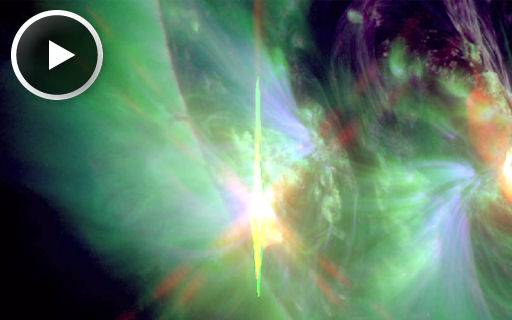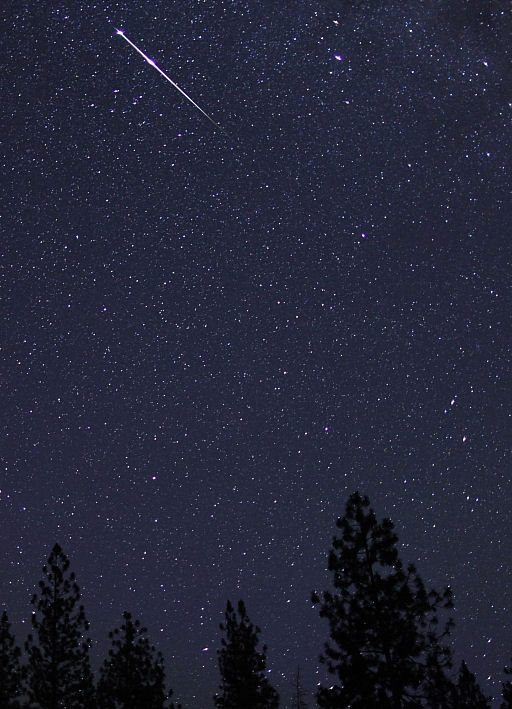Thirty-five new items have just been added to our Meteorite Jewelry collection. Browse the Space Weather Store for something out of this world. | | |
MARS LANDING SKY SHOW: On the same night Curiosity lands on Mars, a "Martian Triangle" will appear in sunset skies of Earth. The first-magnitude apparition on August 5th gives space fans something to do while they wait for news from the Red Planet. [video]
M-CLASS FLARE: Newly-emerging sunspot AR1532 unleashed an M2.7-class solar flare on July 27th at approximately 1726 UT. NASA's Solar Dynamics Observatory captured the extreme ultraviolet flash:

The explosion does not appear to have produced a substantial CME. Even if it did, Earth is not in the line of fire. This sunspot will, however, become more geoeffective in the days ahead as it slowly turns toward Earth. Stay tuned for updates. Solar flare alerts: text, voice.
Realtime Space Weather Photo Gallery
DELTA AQUARID METEOR SHOWER: Earth is entering a stream of debris from Comet 96P/Machholz, source of the annual delta Aquarid meteor shower. Forecasters expect as many as 15 meteors per hour when the shower peaks on July 28-29. The location of the shower's radiant below the celestial equator favors southern hemisphere observers. Nevertheless, northerners can see it too. For instance, David Hoffmann caught this early delta Aquarid flashing over Ashland, Oregon, on July 24th:

"A movie of the meteor may be found on my Youtube page," says Hoffman.
Although this is a minor shower, it is fraught with interest. Some researchers believe that the delta Aquarids' parent comet, 96P/Machholz, came from another star system. Every delta Aquarid that disintegrates in the night sky could be depositing material from across the galaxy into Earth's upper atmosphere.
The best time to look, no matter where you live, is during the dark hours before sunrise on Saturday and Sunday when the moon has set and the constellation Aquarius is relatively high in the sky. Got clouds? Try listening to delta Aquarid radar echoes on Space Weather Radio.
Realtime Noctilucent Cloud Photo Gallery
[previous years: 2003, 2004, 2005, 2006, 2007, 2008, 2009, 2011]
Potentially Hazardous Asteroids (
PHAs) are space rocks larger than approximately 100m that can come closer to Earth than 0.05 AU. None of the known PHAs is on a collision course with our planet, although astronomers are finding
new ones all the time.
On July 27, 2012 there were potentially hazardous asteroids.
Notes: LD means "Lunar Distance." 1 LD = 384,401 km, the distance between Earth and the Moon. 1 LD also equals 0.00256 AU. MAG is the visual magnitude of the asteroid on the date of closest approach. | | The official U.S. government space weather bureau |
| | The first place to look for information about sundogs, pillars, rainbows and related phenomena. |
| | Researchers call it a "Hubble for the sun." SDO is the most advanced solar observatory ever. |
| | 3D views of the sun from NASA's Solar and Terrestrial Relations Observatory |
| | Realtime and archival images of the Sun from SOHO. |
| | from the NOAA Space Environment Center |
| | the underlying science of space weather |

